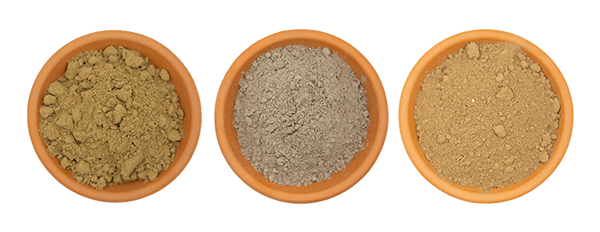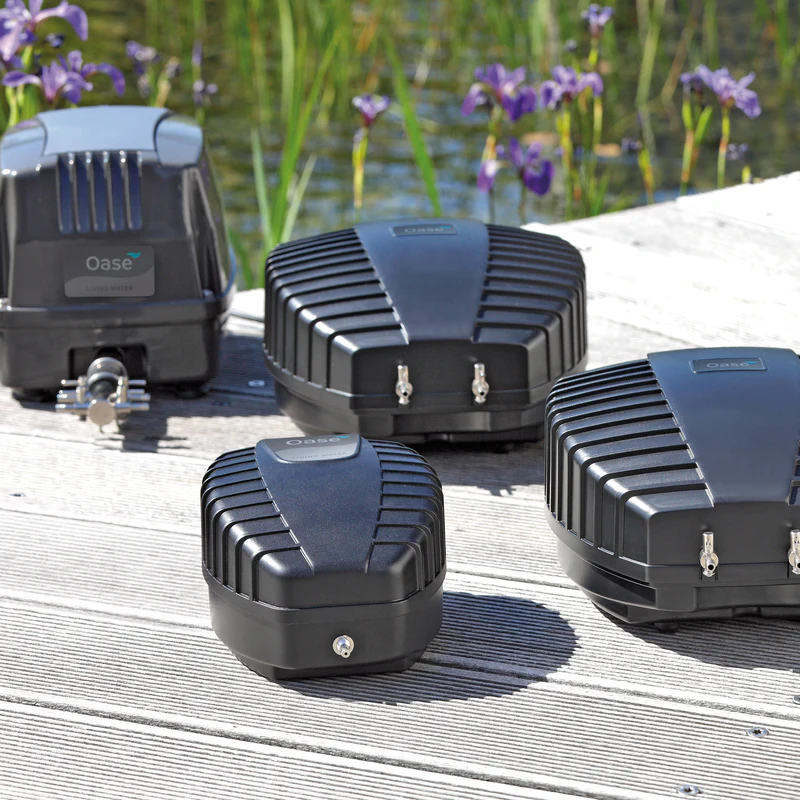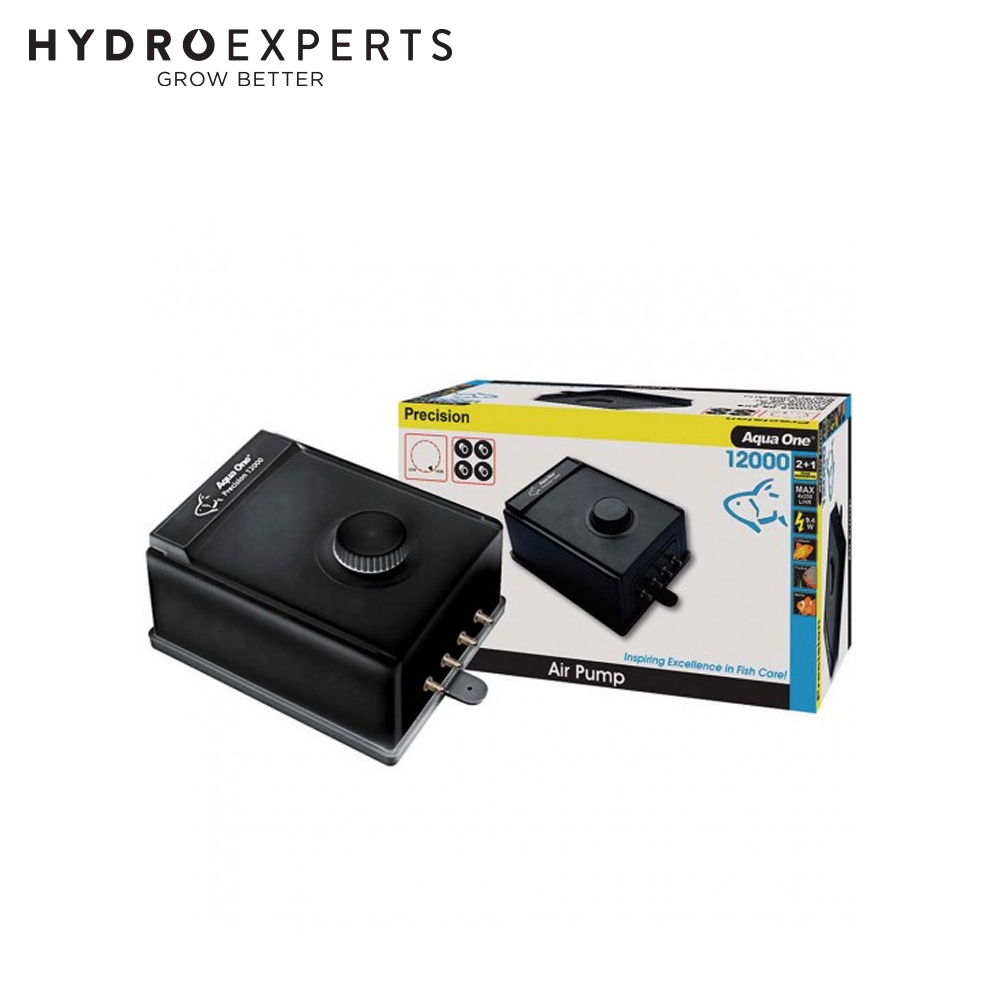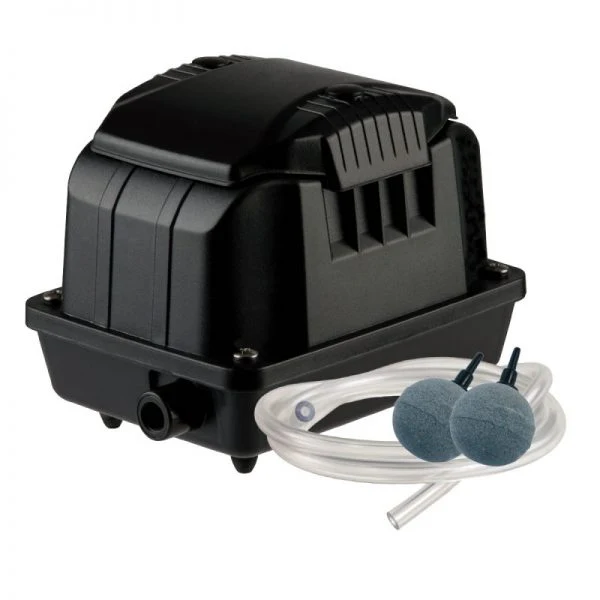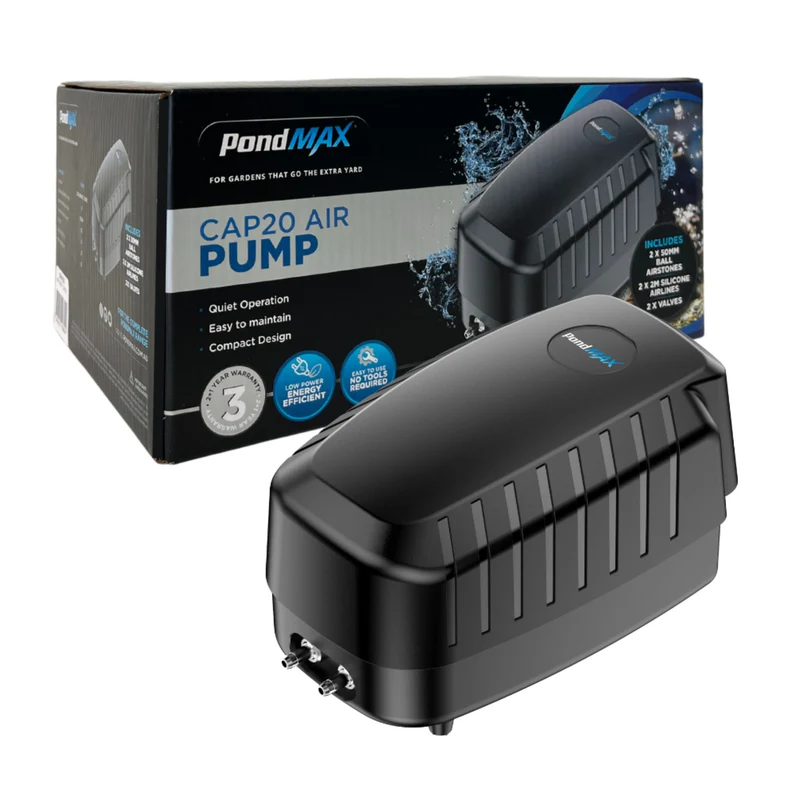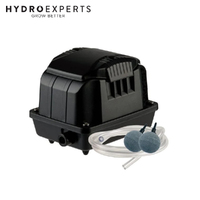What is an Air Pump?
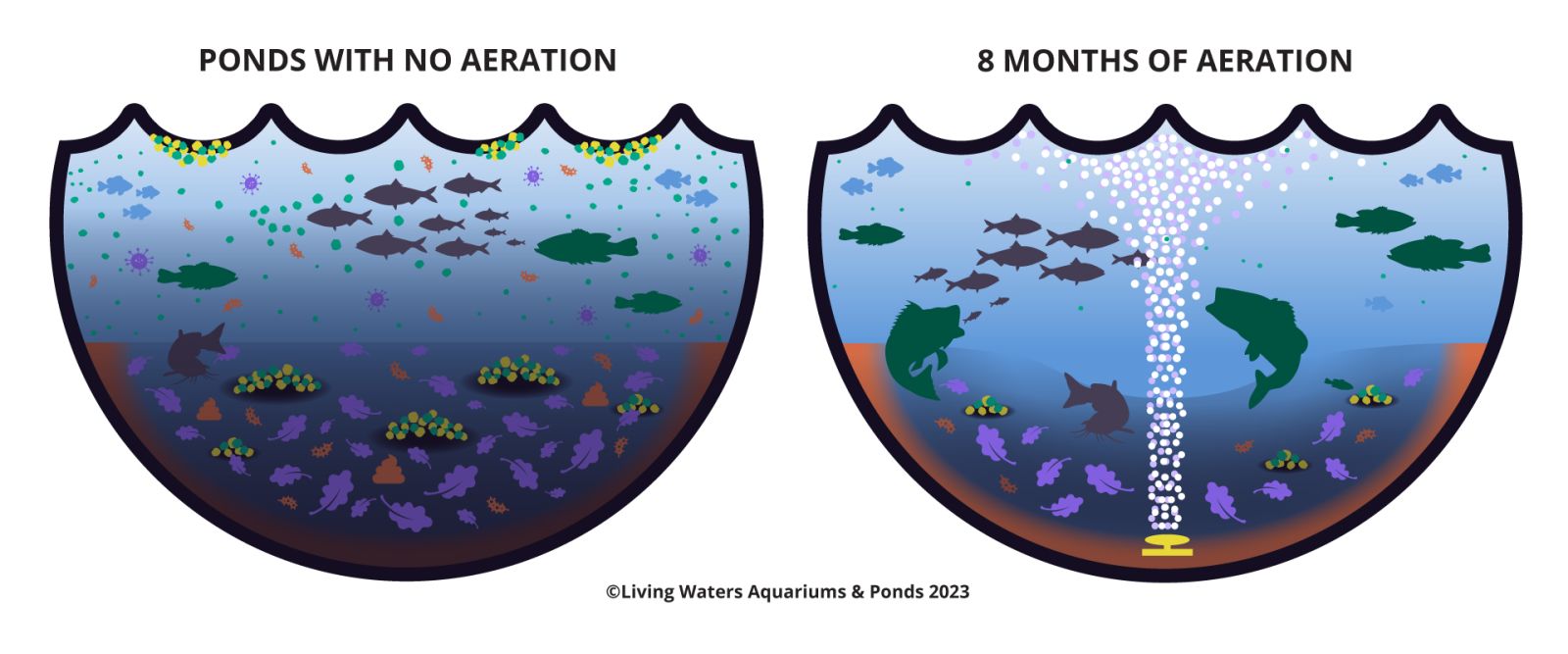
Your pond requires an air pump to operate correctly whether you keep a peaceful koi pond in your backyard or engage in aquaculture. Choosing the right air pump poses numerous challenges because of Australia’s climate differences and special environmental needs. This guide will walk you through the essentials to help you make an informed choice.
What is an Air Pump?
Before getting started with selecting the right air pump, we need to be familiar with what an Air pump is. In simpler terms, it is a device that releases air bubbles into a pond to increase oxygen levels present in a pond and improve water circulation.
What Do Pond Air Pumps Do?
An air pump is a device that moves air into water, facilitating oxygenation and promoting a healthy aquatic environment. It helps maintain water quality by ensuring that oxygen levels remain adequate for fish and beneficial bacteria Here are their primary functions:
- Increase Oxygen Levels: Air pumps infuse oxygen into the water, ensuring fish, plants, and beneficial bacteria thrive.
- Improve Water Circulation: By distributing oxygen evenly, air pumps help reduce stagnant zones and promote a balanced ecosystem.
- Support Beneficial Bacteria: Aerobic bacteria need oxygen to break down organic waste, which helps keep the water clean and clear.
- Prevent Ice Formation: In colder regions, air pumps keep water moving, preventing surface ice and maintaining a safe environment for aquatic life.
How Do Pond Air Pumps Work?
Pond air pumps operate by pushing air into the water through a system of tubing and diffusers. Here’s a breakdown of how they work:
- Air Intake: The pump pulls in air from the surrounding environment.
- Compression: The internal mechanism, often a diaphragm or piston, compresses the air.
- Air Distribution: The compressed air travels through tubing connected to diffusers or air stones placed in the pond.
- Oxygenation: The air stones or diffusers release the air in the form of fine bubbles, increasing the water’s oxygen content and promoting circulation.
Why Is an Air Pump Essential for Your Pond?
An air pump enhances water quality by increasing oxygen levels and improving circulation. Here’s why it matters:
- Oxygenation: Fish, plants and beneficial bacteria rely on dissolved oxygen. In stagnant water, oxygen depletion can lead to fish stress or death and poor water quality.
- Circulation: Air pumps prevent stratification (temperature layering) by circulating water, ensuring consistent oxygen and temperature levels throughout the pond.
- Algae Control: Improved circulation inhibits algae growth by reducing stagnant zones and encouraging a healthier ecosystem.
- Climate Adaptability: In Australia’s varying climates, air pumps help mitigate temperature-related oxygen stress, whether it’s a hot summer in Queensland or a chilly winter in Victoria.
Factors to Consider When Choosing an Air Pump
1. Pond Size and Depth
The size and depth of your pond directly influence the type and capacity of the air pump you need:
- Shallow Ponds (<1 metre): Smaller pumps with lower pressure ratings work well for shallow ponds as less power is needed to push air.
- Medium Ponds (1–3 metres): For medium-sized ponds, choose pumps designed to deliver adequate airflow at depth without overworking.
- Deep Ponds (>3 metres): Air pumps with higher pressure capabilities (e.g., piston or rotary vane pumps) are necessary to maintain effective oxygenation at depth.
2. Flow Rate and Air Output
Flow rate (measured in litres per minute, LPM) determines how much air the pump can deliver. Use these guidelines:
- Calculate your pond’s volume in litres (Length x Width x Depth x 1000 for rectangular ponds).
- A general rule: Provide at least 0.5 LPM of air per 1000 litres of pond water. For heavily stocked ponds, aim for 1 LPM or more.
3. Energy Efficiency
Energy consumption is a key concern, especially in Australia, where electricity costs can be high. Look for air pumps with:
- High-efficiency ratings: Choose models designed for continuous operation without excessive energy use.
- Renewable energy options: Solar-powered pumps are an eco-friendly alternative, ideal for sunny regions like New South Wales and Queensland.
4. Climate and Seasonal Needs
Australia’s climate varies significantly, which impacts pond aeration requirements:
- Tropical Areas: In warmer climates, ponds require year-round aeration due to high temperatures reducing oxygen levels.
- Colder Regions: In cooler climates, air pumps prevent ice formation in winter (especially in Tasmania and alpine areas), maintaining a safe environment for aquatic life.
5. Noise Levels
For backyard ponds, noise can be a concern. Opt for pumps marketed as quiet or equipped with noise-dampening features. Look for models with:
- Rubber mounts to reduce vibration.
- Enclosures or housings designed to muffle sound.
6. Durability and Weather Resistance
Outdoor air pumps should withstand harsh Australian conditions, including:
- UV exposure: Prolonged sun exposure can degrade materials; ensure your pump is made of UV-resistant materials.
- Waterproofing: Look for pumps with IP (Ingress Protection) ratings that indicate resistance to water and dust.
7. Type of Pump
The two most common types of air pumps are:
- Diaphragm Pumps: Ideal for small to medium ponds. These are energy-efficient, quiet, and affordable but may require regular diaphragm replacements.
- Piston Pumps: Suitable for deeper ponds or high-pressure requirements. These pumps are robust and powerful but can be noisier and more expensive to operate.
Popular Air Pump Brands in Australia
1. Oase Aqua Oxy Series
Oase offers a range of diaphragm pumps known for their reliability and efficiency, which are suitable for various pond sizes.
2. Aqua One Aquarium pumps
Aqua One offers a range of aquarium air pumps that are compact, efficient and versatile suitable for aquariums and small pond setups.
3. Pondmax PA range
The Pondmax PA range(PA10, PA20) features compact, efficient air pumps perfect for small to medium ponds.
4. Pondmax CAP range
The Pondmax CAP range(CAP20, CAP50, CAP100) is designed for larger ponds as these pumps offer high air output and are built to withstand challenging conditions.
Environmental Considerations
Australia’s unique environment calls for sustainable practices. Here’s how to keep your pond eco-friendly:
- Solar-Powered Pumps: Utilise Australia’s abundant sunlight with solar-powered options. These are ideal for regions with high solar exposure, reducing your carbon footprint and electricity bills.
- Eco-Friendly Materials: Choose pumps made with recyclable or environmentally friendly components.
- Timers and Smart Controls: Use programmable pumps to run during peak oxygen demand (e.g., during the day when photosynthesis increases oxygen levels).
- Minimise Energy Use: Pair your pump with an efficient pond design, like strategic placement of aeration devices to maximise circulation.
Installation and Maintenance Tips
Installation
- Positioning: Place the pump above water level or use a check valve to prevent backflow.
- Aeration Devices: Connect the pump to air stones, diffusers, or bubble tubes to distribute air effectively.
- Shade and Shelter: Install the pump in a shaded, dry area to protect it from extreme weather.
Maintenance
- Check Air Stones: Clean or replace clogged air stones to maintain optimal performance.
- Inspect Diaphragms: Regularly check and replace diaphragms or other internal parts to prevent breakdowns.
- Filter Cleaning: Keep intake filters free of debris to ensure consistent airflow.
- Seasonal Adjustments: Adjust pump settings or reposition diffusers based on seasonal oxygen needs.
Common Mistakes to Avoid
- Oversizing or Undersizing: An oversized pump wastes energy, while an undersized one fails to oxygenate effectively.
- Not using an air stone: Air stones help in circulating oxygen inside the pond.
- Ignoring Depth Requirements: Ensure your pump can handle the pond’s depth to avoid poor performance.
- Skipping Maintenance: Neglected pumps often fail prematurely, leading to costly replacements.
- Improper Placement: Avoid placing the pump in direct sunlight or waterlogged areas.
Recommended Features for Australian Conditions
- Thermal Protection: Prevents overheating during hot summers.
- Energy Star Ratings: Indicates efficiency and lower environmental impact.
- Long Warranty Periods: Ensure reliability and peace of mind.
- Dual-Function Pumps: Some pumps can aerate and circulate water simultaneously, providing better value.
Wrapping Up: Choosing Your Air Pump
Selecting the perfect air pump for your pond requires knowing your needs, from pond size and depth to climate and environmental goals By considering these factors and prioritising efficiency and sustainability, you can ensure a thriving pond ecosystem while minimising environmental impact.
FAQs
To determine the right size, calculate your pond's volume in litres (Length x Width x Depth x 1000 for rectangular ponds). For every 1,000 litres, aim for at least 0.5 LPM of air output. Larger or heavily stocked ponds may require 1 LPM or more.
Yes, but you may need to adjust its usage. In warmer regions, run the pump continuously to counter low oxygen levels. In colder regions, use the pump to prevent ice formation during winter, ensuring diffusers are placed closer to the surface.
Solar-powered pumps can be highly effective, especially in sunny regions like Queensland or New South Wales. However, ensure the pump is equipped with a battery backup to maintain operation during cloudy days or nighttime.
Diaphragm pumps are quieter and more energy-efficient, ideal for small to medium ponds. Piston pumps, on the other hand, are powerful and durable, making them better suited for larger or deeper ponds that require high air pressure.
Perform maintenance every 3–6 months. Check and clean air stones, replace diaphragms if needed, and inspect intake filters for debris. Regular maintenance ensures the pump runs efficiently and lasts longer.

